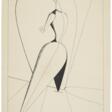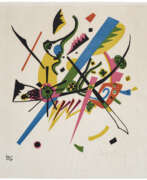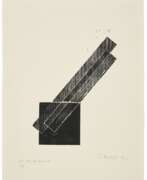Bauhaus

Bauhaus
Bauhaus, a German art school operational from 1919 to 1933, revolutionized the way we think about design, architecture, and art. Founded by Walter Gropius, its ethos was to combine crafts and fine arts, underpinned by the belief that functional does not mean unattractive. The school embraced modernism, striving to integrate art into everyday life, which is evident in its minimalist approach to design, emphasizing functionality without sacrificing aesthetic appeal.
The Bauhaus curriculum was innovative, starting with a preliminary course on materials, color theory, and formal relationships, which prepared students for more specialized studies. Esteemed artists such as Paul Klee and Wassily Kandinsky were among the faculty, guiding students through workshops in metalworking, carpentry, textile, ceramics, and painting mural. This approach not only blurred the lines between artist and craftsman but also promoted the idea of a "total work of art" where all forms of art would eventually be brought together.
The movement left an indelible mark on modern design, influencing not just architecture and furniture design but also painting, sculpture, and graphic design. Despite its brief existence, Bauhaus principles continue to underpin much of contemporary design philosophy, advocating for simplicity, rationality, and the integration of technology and art. Iconic designs, such as Marcel Breuer's metal furniture and the architectural marvel that is the Bauhaus building in Dessau, demonstrate the timeless appeal of Bauhaus aesthetics.
For collectors and experts in art and antiques, Bauhaus represents a pivotal chapter in the history of modern design, offering insights into the confluence of art, craftsmanship, and functionality. If you're intrigued by the innovative spirit of Bauhaus and its influence on modern aesthetics, consider signing up for updates on new product sales and auction events related to Bauhaus. Stay informed about opportunities to own a piece of design history that continues to shape our visual and functional landscape.
| Country: | Europe, Germany |
|---|---|
| Start of the period: | 1919 |
| End of the period: | 1933 |











